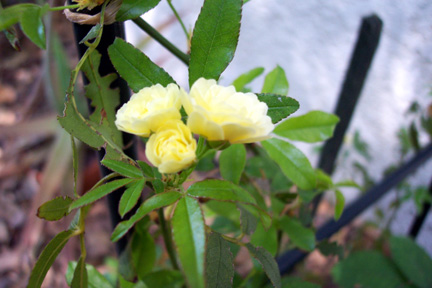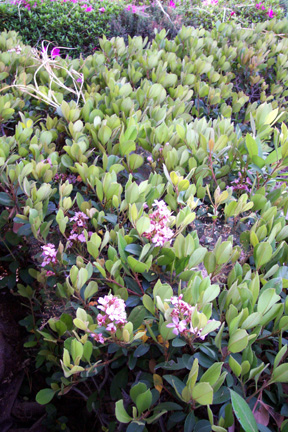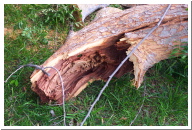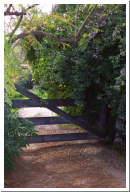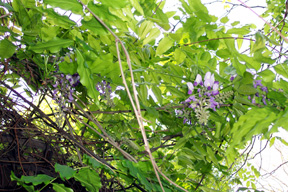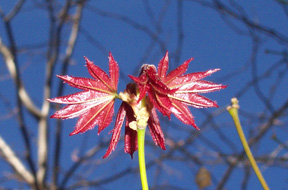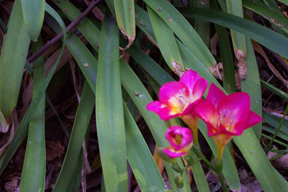Outdoors
I often find that I don't get out into the garden enough. While I might look at it through the windows of my office, I rarely go out and sit in the garden. Today, though, during some down time between computer consulting calls, I took my books and notebooks and spent some time just enjoying the garden.
I pruned back a few over-reaching limbs on the Wisteria to reveal more of the dangling purple blooms that have appeared. The locust tree is showing some green now, almost to the very day it started growing last year. The honey bees (our neighbor keeps one small hive on the roof of his garden shed) and wasps are probing each of the newly opened leaflets/blooms that occur on the locust.The tree will be completely covered with them once more of the blooms appear. They seem to really love them. I noticed the wasp was investigating a nice shady spot under the eaves as a possible next site. I don't have many problems with wasps, but I don't let them build in the porch or other, high-traffic, areas. They have their place in the garden, but they can be a bit nastier than your average honey bee. As I sit here typing, a large bumblebee, or perhaps a carpenter bee, has approached to check out the Wisteria blooms. While these big bees look very intimidating, I find them much more docile than the waps.
Our small, pitiful lemon tree and the neighbors orange trees are making the garden air a heady mixture. The smell seems almsot palpable. You feel like you should see it hanging in the air or dripping off you arms like a fog. There is nothing quite like that smell. It won't last for a long time, but what it lacks in loingevity it makes up in pure power of suggestion. One whiff and you start thinking of Spring and Summer and all the usual rituals to come in the next few months.
As I was a reading earlier, a lady bug lighted on my bookmark with a loud "click." I haven't seen many aphids on the roses this year, but this ladybug seemed quite robust. Maybe the aphids have decided to hold their party elsewhere. I certainly wouldn't mind them leaving my roses alone this year.
Regardless of any majoer effort on my part, the garden seems to attract a wide variety of butterflies and moths. While I know a good deal about plants and animals, my recollection of insect species is miserable. I would need a good book in order for me to indentify these butterflies, but they are often gone long before I can even consider getting my reference books. I guess it is simply better to enjoy them while they are here instead of trying to obsessively name them.
Weeds are rapidly taking over the front garden after all the rain we had a few weeks ago. It is time to store the hoe and weeder tools right by the front door, so I can do a little bit of work each time I step out. The western exposure of the front garden make is a little too hot to garden in the middle of the day, but morning and early evening should give enough time to get things done.
It is only the middle of March, but our bulbs are already fading. The daffodil blooms are wilting and the leaves of the paperwhites, blooms gone weeks ago, are starting to flop over. I will let them gather as much sun as they can before discarding the leaves so that they gain enough energy to come back good and strong next year.
So now I return to my reading while listening to the mockingbird sing a few houses away. I will need to get into my "professional" clothes in a little while, off to earn a living, but today will be better for the time I spent in the garden.


